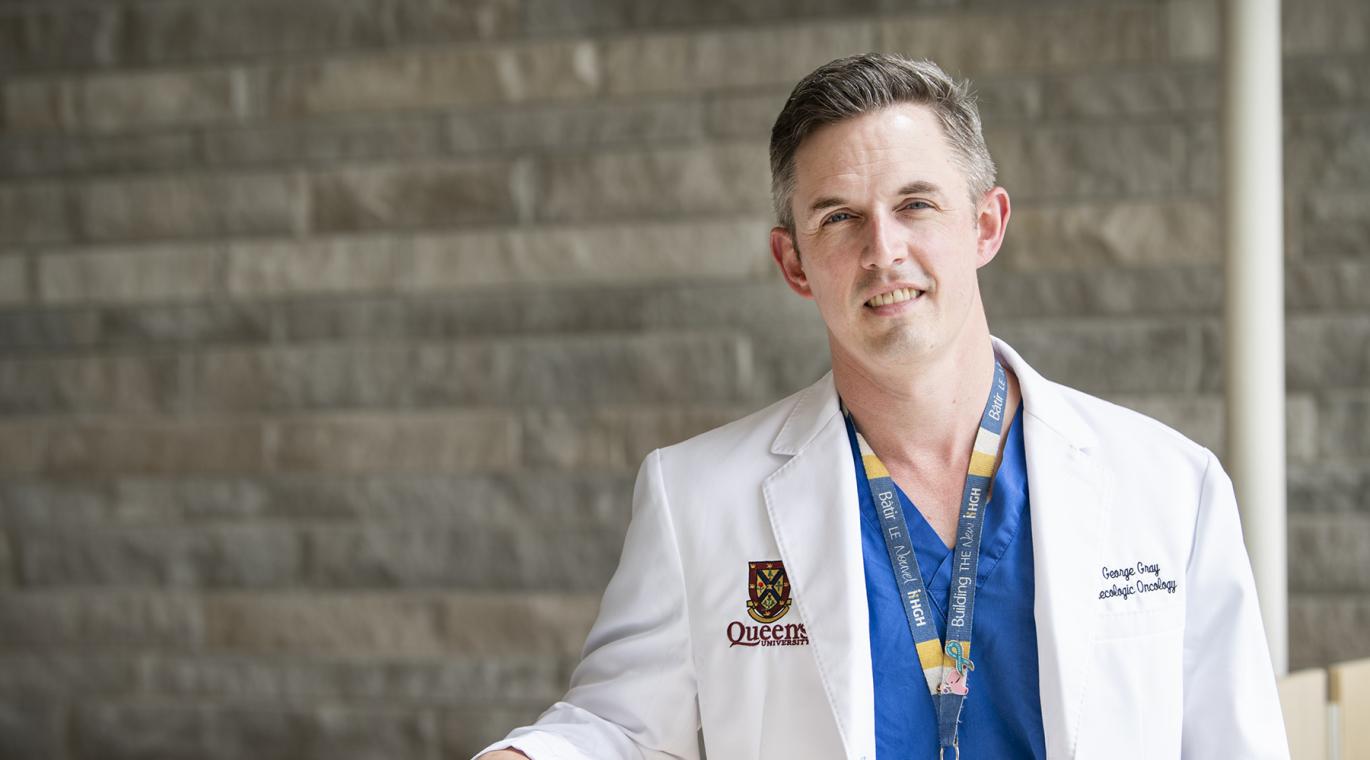
Dr. George Gray is a gynecologic oncologist in the Department of Obstetrics and Gynecology (OBGYN) at Queen’s and Kingston Health Sciences Centre (KHSC). What you might not know about him is he paid his way through his undergraduate program teaching ice dance.
“I was not an ice dancer, I was a hockey player. I had an instructor who also did figure skating stuff and he said I’d be good for this and taught me for free. Within a few months, I had a job partnering for ice dance and worked for seven years in Cornwall doing that,” he shares.
When Dr. Gray is not teaching his son how to skate using his considerable skills on the ice, his clinical, education and research schedules keep him quite busy. “As a clinician in gynecologic oncology, I treat female pelvic malignancies and perform minimally invasive procedures using the robot at KHSC. I am the Robotics Lead for the Department and the robot has shown its value dealing with our patient population with unique surgical challenges,” he explains. “I’ve also been involved in the steering committee to see the program spread across the hospital.”
While Dr. Gray says his teaching in a typical didactic style is limited, he also describes how no clinic of his goes by without him teaching medical students: “I do significant work in teaching residents and medical students inside and outside of the operating room. I teach about HPV-related diseases and vulvar and cervical cancers in the gynecological oncology clinic.” His research realm takes on a similar focus – the surgical field of oncologic demands in gynecology and immunotherapy in the context of endometrial and ovarian cancer.
Dr. Gray has been in his role since July 2019 and his weeks vary in terms of activities. “I have a clinical week – most mornings I start in the hospital seeing patients starting at 7 a.m. then head off to clinical duties whether that be at the cancer clinic at the Cancer Centre or the colposcopy clinic in the Lakeside Clinic, both at KHSC. One day a week I am in the operating room on my surgical day with the robot,” he shares.
One myth Dr. Gray wishes to debunk about his field is the regrettable stereotype that gynecologists are not real surgeons. “I think over the years we’ve proven we have the chops to cut it in the OR. We take on complex patients with difficult diseases related to oncology or significant endometriosis and they’re some of the best surgeons I’ve met.”
In order to complement his medical skills, Dr. Gray says he hopes to take advantage of the funding opportunities SEAMO provides. “Coming out of the pandemic with a more stable home environment, there are opportunities to further my own learning and tapping the resources available through SEAMO would be extremely helpful in pushing me to the next level as an educator and clinician.”
In the future, Dr. Gray is excited that this year the government has approved the use of robotics for patients with gynecologic conditions. “This change in the funding model will mean more women get access to robotic surgery in oncologic and non-oncologic environments.” And what else does Dr. Gray hope to see in the coming years? “I’d like to see an end to cervical cancer. We vaccinate for HPV not starting in grade seven in Ontario, but we’re still seeing cervical cancer out there. If appropriate screening is applied and followed, it is an entirely preventable disease,” he says. A new idea from the Department of OBGYN that has gained a lot of traction in this effort is their pap parties. “During Cervical Cancer Awareness Week, we do a pap party where my colleagues and I do screenings for people without family doctors and increase the rate of screening in our community.”
